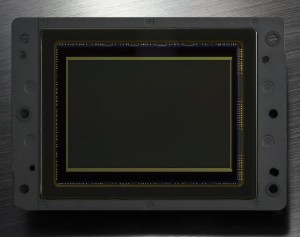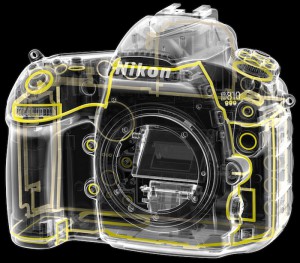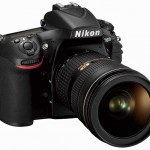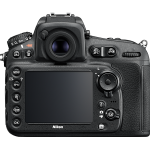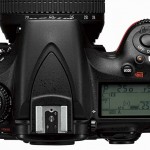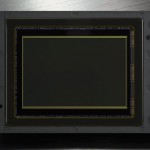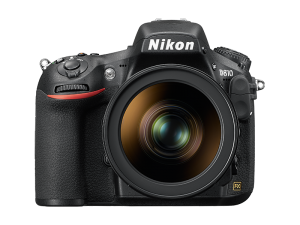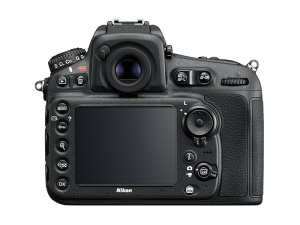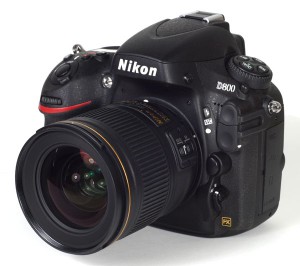| Type |
| Type |
Single-lens reflex digital camera |
| Lens mount |
Nikon F mount (with AF coupling and AF contacts) |
| Effective angle of view |
Nikon FX format |
| Effective pixels |
| Effective pixels |
36.3 million |
| Image sensor |
| Image sensor |
35.9 x 24.0 mm CMOS sensor |
| Total pixels |
37.09 million |
| Dust-reduction system |
Image sensor cleaning, Image Dust Off reference data (requires Capture NX-D software) |
| Storage |
| Image size (pixels) |
- FX format (36×24): 7360 x 4912 (L), 5520 x 3680 (M), 3680 x 2456 (S)
- 1.2x (30×20): 6144 x 4080 (L), 4608 x 3056 (M), 3072 x 2040 (S)
- DX format (24×16): 4800 x 3200 (L), 3600 x 2400 (M), 2400 x 1600 (S)
- 5:4 (30×24): 6144 x 4912 (L), 4608 x 3680 (M), 3072 x 2456 (S)
- FX-format photographs taken in movie live view: 6720 x 3776 (L), 5040 x 2832 (M), 3360 x 1888 (S)
- DX-format photographs taken in movie live view: 4800 x 2704 (L), 3600 x 2024 (M), 2400 x 1352 (S)
Note: Photographs taken in movie live view have an aspect ratio of 16:9; A DX-based format is used for photographs taken using the DX (24×16) 1.5x image area; an FX-based format is used for all other photographs
|
| File format |
- NEF (RAW): 12 or 14 bit, lossless compressed, compressed or uncompressed; small size available (12-bit uncompressed only)
- TIFF (RGB)
- JPEG: JPEG-Baseline compliant with fine (approx. 1:4), normal (approx. 1:8) or basic (approx. 1:16) compression (Size priority); Optimal quality compression available
- NEF (RAW)+JPEG: Single photograph recorded in both NEF (RAW) and JPEG formats
|
| Picture Control system |
Can be selected from Standard, Neutral, Vivid, Monochrome, Portrait, Landscape, Flat; selected Picture Control can be modified; storage for custom Picture Controls |
| Storage media |
SD (Secure Digital) and UHS-I compliant SDHC and SDXC memory cards; Type I CompactFlash memory cards (UDMA compliant) |
| Dual card slots |
Either card can be used for primary or backup storage or for separate storage of NEF (RAW) and JPEG images; pictures can be copied between cards |
| File system |
DCF 2.0, DPOF, Exif 2.3, PictBridge |
| Viewfinder |
| Viewfinder |
Eye-level pentaprism single-lens reflex viewfinder |
| Frame coverage |
- FX (36×24): Approx. 100% horizontal and 100% vertical
- 1.2x (30×20): Approx. 97% horizontal and 97% vertical
- DX (24×16): Approx. 97% horizontal and 97% vertical
- 5:4 (30×24): Approx. 97% horizontal and 100% vertical
|
| Magnification |
Approx. 0.7x (50 mm f/1.4 lens at infinity, -1.0 m-1) |
| Eyepoint |
17 mm (-1.0 m-1; from center surface of viewfinder eyepiece lens) |
| Diopter adjustment |
-3 to +1 m-1 |
| Focusing screen |
Type B BriteView Clear Matte Mark VIII screen with AF area brackets and framing grid |
| Reflex mirror |
Quick return |
| Depth-of-field preview |
Pressing Pv button stops lens aperture down to value selected by user (A and M modes) or by camera (P and S modes) |
| Lens aperture |
Instant return, electronically controlled |
| Lens |
| Compatible lenses |
Compatible with AF NIKKOR lenses, including type G, E, and D lenses (some restrictions apply to PC lenses), DX lenses (using DX (24×16) 1.5x image area) AI-P NIKKOR lenses, and non-CPU AI lenses (exposure modes A and M only); IX-NIKKOR lenses, lenses for the F3AF, and non-AI lenses cannot be used: The electronic rangefinder can be used with lenses that have a maximum aperture of f/5.6 or faster (the electronic rangefinder supports the 11 focus points with lenses that have a maximum aperture of f/8 or faster) |
| Shutter |
| Type |
Electronically-controlled vertical-travel focal-plane mechanical shutter, electronic front-curtain shutter (in mirror up release mode) |
| Speed |
1/8000 to 30 s in steps of 1/3, 1/2 or 1 EV, bulb, time, X250 |
| Flash sync speed |
X=1/250 s; synchronizes with shutter at 1/320 s or slower (flash range drops at speeds between 1/250 and 1/320 s) |
| Release |
| Release mode |
S (single frame), CL (continuous low speed), CH (continuous high speed), Q (quiet shutter-release), QC (quite continuous shutter-release), Self-timer, MUP (mirror up) |
| Frame advance rate |
- With EN-EL15 batteries
(FX/5:4) CL: Approx. 1 to 5 fps, CH: Approx. 5 fps, QC: Approx. 3 fps
(DX/1.2x) CL: Approx. 1 to 6 fps, CH: Approx. 6 fps, QC: Approx. 3 fps
- Other power sources
(FX/5:4) CL: Approx. 1 to 5 fps, CH: Approx. 5 fps, QC: Approx. 3 fps
(1.2x) CL: Approx. 1 to 6 fps, CH: Approx. 6 fps, QC: Approx. 3 fps
(DX) CL: Approx. 1 to 6 fps, CH: Approx. 7 fps, QC: Approx. 3 fps
|
| Self-timer |
2 s, 5 s, 10 s, 20 s; 1 to 9 exposures at intervals of 0.5, 1, 2 or 3 s |
| Exposure |
| Metering |
TTL exposure metering using 91K-pixel RGB sensor |
| Metering method |
- Matrix: 3D color matrix metering III (type G, E and D lenses); color matrix metering III (other CPU lenses); color matrix metering available with non-CPU lenses if user provides lens data
- Center-weighted: Weight of approx. 75% given to 12-mm circle in center of frame; diameter of circle can be changed to 8, 15 or 20 mm, or weighting can be based on average of entire frame (non-CPU lenses use 12-mm circle)
- Spot: Meters 4-mm circle (about 1.5% of frame) centered on selected focus point (on center focus point when non-CPU lens is used)
- Highlight-weighted: Available with type G, E and D lenses (equivalent to center-weighted when other lenses are used)
|
Range
(ISO 100, f/1.4 lens, 20°C/68°F) |
- Matrix, center-weighted, or highlight-weighted metering: 0 to 20 EV
- Spot metering: 2 to 20 EV
|
| Exposure meter coupling |
Combined CPU and AI |
| Mode |
Programmed auto with flexible program (P); shutter-priority auto (S); aperture-priority auto (A); manual (M) |
| Exposure compensation |
-5 to +5 EV in increments of 1/3, 1/2 or 1 EV |
| Exposure bracketing |
2 to 9 frames in steps of 1/3, 1/2, 2/3 or 1 EV; 2 to 5 frames in steps of 2 or 3 EV |
| Exposure lock |
Luminosity locked at detected value with AE-L/AF-L button |
ISO sensitivity
(Recommended Exposure Index) |
ISO 64 to 12800 in steps of 1/3, 1/2 or 1 EV; can also be set to approx. 0.3, 0.5, 0.7 or 1 EV (ISO 32 equivalent) below ISO 64 or to approx. 0.3, 0.5, 0.7, 1 or 2 EV (ISO 51200 equivalent) above ISO 12800; auto ISO sensitivity control available |
| Active D-Lighting |
Can be selected from auto, extra high, high, normal, low or off |
| ADL bracketing |
2 frames using selected value for one frame or 3 to 5 frames using preset values for all frames |
| Focus |
| Autofocus |
Nikon Advanced Multi-CAM 3500FX autofocus sensor module with TTL phase detection, fine-tuning, 51 focus points (including 15 cross-type sensors; f/8 supported by 11 sensors), and AF-assist illuminator (range approx. 0.5 to 3 m/1 ft 8 in. to 9 ft 10 in.) |
| Detection range |
-2 to +19 EV (ISO 100, 20°C/68°F) |
| Lens servo |
- Autofocus (AF): Single-servo AF (AF-S); continuous-servo AF (AF-C); predictive focus tracking automatically activated according to subject status
- Manual focus (M): Electronic rangefinder can be used
|
| Focus point |
Can be selected from 51 or 11 focus points |
| AF-area mode |
Single-point AF, 9-, 21- or 51-point dynamic-area AF, 3D-tracking, group-area AF, auto-area AF |
| Focus lock |
Focus can be locked by pressing shutter-release button halfway (single-servo AF) or by pressing AE-L/AF-L button |
| Flash |
| Built-in flash |
Manual pop-up with button release and a guide number of approx. 12/39, 12/39 with manual flash (m/ft, ISO 100, 20°C/68°F) |
| Flash control |
TTL: i-TTL flash control using 91K-pixel RGB sensor is available with built-in flash; i-TTL balanced fill-flash for digital SLR is used with matrix, center-weighted and highlight-weighted metering, standard i-TTL flash for digital SLR with spot metering |
| Flash mode |
Front-curtain sync, slow sync, rear-curtain sync, red-eye reduction, red-eye reduction with slow sync, slow rear-curtain sync, off; auto FP high-speed sync supported |
| Flash compensation |
-3 to +1 EV in increments of 1/3, 1/2 or 1 EV |
| Flash bracketing |
2 to 9 frames in steps of 1/3, 1/2, 2/3 or 1 EV; 2 to 5 frames in steps of 2 or 3 EV |
| Flash-ready indicator |
Lights when built-in flash or optional flash unit is fully charged; blinks after flash is fired at full output |
| Accessory shoe |
ISO 518 hot-shoe with sync and data contacts and safety lock |
Nikon Creative Lighting
System (CLS) |
Nikon CLS supported; commander mode option available |
| Sync terminal |
ISO 519 sync terminal with locking thread |
| White balance |
| White balance |
Auto (2 types), incandescent, fluorescent (7 types), direct sunlight, flash, cloudy, shade, preset manual (up to 6 values can be stored, spot white balance measurement available during live view), choose color temperature (2500 K to 10000 K); all with fine-tuning |
| White balance bracketing |
2 to 9 frames in steps of 1, 2 or 3 |
| Live View |
| Live view mode |
Live view photography (still images), movie live view (movies) |
| Lens servo |
- Autofocus (AF): Single-servo AF (AF-S); full-time servo AF (AF-F)
- Manual focus (M)
|
| AF-area mode |
Face-priority AF, wide-area AF, normal-area AF, subject-tracking AF |
| Autofocus |
Contrast-detect AF anywhere in frame (camera selects focus point automatically when face-priority AF or subject-tracking AF is selected) |
| Movie |
| Metering |
TTL exposure metering using main image sensor |
| Metering method |
Matrix, center-weighted, or highlight-weighted |
Frame size (pixels)
and frame rate |
- 1920 x 1080; 60 p (progressive), 50 p, 30 p, 25 p, 24 p
- 1280 x 720; 60p, 50p
Actual frame rates for 60p, 50p, 30p, 25p, and 24p are 59.94, 50, 29.97, 25, and 23.976 fps respectively; all options support both high and normal image quality |
| File format |
MOV |
| Video compression |
H.264/MPEG-4 Advanced Video Coding |
| Audio recording format |
Linear PCM |
| Audio recording device |
Built-in or external stereo microphone; sensitivity adjustable |
| ISO sensitivity |
- Exposure modes P, S and A: Auto ISO sensitivity control (ISO 64 to Hi 2) with selectable upper limit
- Exposure mode M: Auto ISO sensitivity control (ISO 64 to Hi 2) available with selectable upper limit; manual selection (ISO 64 to 12800 in steps of 1/3, 1/2 or 1 EV); can also be set to approx. 0.3, 0.5, 0.7, 1 or 2 EV (ISO 51200 equivalent) above ISO 12800
|
| Other movie options |
Index marking, time-lapse photography |
| Monitor |
| Monitor |
8-cm/3.2-in., approx. 1229 k-dot (VGA; 640 x RGBW x 480 = 1,228,800 dots) TFT monitor with 170 ° viewing angle, approx. 100% frame coverage, and brightness adjustment |
| Playback |
| Playback |
Full-frame and thumbnail (4, 9 or 72 images) playback with playback zoom, movie playback, photo and/or movie slide shows, histogram display, highlights, photo information, location data display, auto image rotation |
| Interface |
| USB |
SuperSpeed USB (USB 3.0 Micro-B connector); connection to built-in USB port is recommended |
| HDMI output |
Type C HDMI connector |
| Audio input |
Stereo mini-pin jack (3.5-mm diameter; plug-in power supported) |
| Audio output |
Stereo mini-pin jack (3.5-mm diameter) |
| Ten-pin remote terminal |
Can be used to connect optional remote control, optional WR-R10 (requires WR-A10 Adapter) or WR-1 Wireless Remote Controller, GP-1/GP-1A GPS Unit, or GPS device compliant with NMEA0183 version 2.01 or 3.01 (requires optional MC-35 GPS Adapter Cord and cable with D-sub 9-pin connector) |
| Supported languages (may differ by country or area) |
| Supported languages |
Arabic, Bengali, Bulgarian, Chinese (Simplified and Traditional), Czech, Danish, Dutch, English, Finnish, French, German, Greek, Hindi, Hungarian, Indonesian, Italian, Japanese, Korean, Marathi, Norwegian, Persian, Polish, Portuguese (Portugal and Brazil), Romanian, Russian, Serbian, Spanish, Swedish, Tamil, Telugu, Thai, Turkish, Ukrainian, Vietnamese |
| Power source |
| Battery |
One EN-EL15 Rechargeable Li-ion Battery |
| Battery pack |
Optional MB-D12 Multi-Power Battery Pack with one EN-EL15/EN-EL18a*/EN-EL18* Rechargeable Li-ion Battery or eight AA-size alkaline, Ni-MH or lithium batteries
* Available separately; Requires optional BL-5 Battery Chamber Cover |
| AC adapter |
EH-5b AC Adapter; requires EP-5B Power Connector (available separately) |
| Tripod socket |
| Tripod socket |
1/4 in. (ISO 1222) |
| Dimensions / weight |
Dimensions
(W x H x D) |
Approx. 146 x 123 x 81.5 mm/5.8 x 4.9 x 3.3 in. |
| Weight |
Approx. 980 g/2 lb 2.6 oz with battery and SD memory card but without body cap; approx. 880 g/1 lb 15.1 oz (camera body only) |
| Operating environment |
| Temperature |
0 to 40°C/32 to 104°F |
| Humidity |
85% or less (no condensation) |
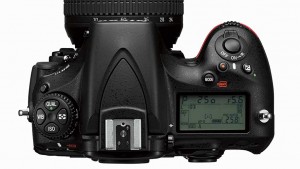 June 26, 2014 – The new Nikon D810 extends the features and capabilities of the popular Nikon D800 line, bringing a higher level of performance for the demanding user.
June 26, 2014 – The new Nikon D810 extends the features and capabilities of the popular Nikon D800 line, bringing a higher level of performance for the demanding user.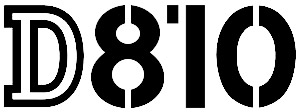 The D810 features the latest EXPEED 4 processing engine, boosting performance to 5fps (from 4fps) continuous shooting at full resolution, and 7fps in DX crop mode. The improved performance also allows a new RAW image size S similar to Canon’s familiar sRAW. This allows a down sampled 12-bit uncompressed .NEF file for those looking to store more pictures improve workflow efficiency.
The D810 features the latest EXPEED 4 processing engine, boosting performance to 5fps (from 4fps) continuous shooting at full resolution, and 7fps in DX crop mode. The improved performance also allows a new RAW image size S similar to Canon’s familiar sRAW. This allows a down sampled 12-bit uncompressed .NEF file for those looking to store more pictures improve workflow efficiency.
